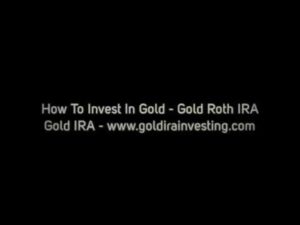
The Importance of Risk Awareness for Institutional Investors
Institutional investors looking to earn rewards from digital asset token staking must be well-informed about the associated risks. Andrew McFarlane, the CTO at Validation Cloud, a Web3 infrastructure company, emphasizes the need for asset managers to take steps to protect their clients. One particular risk that asset managers should be aware of is slashing, which is a penalty imposed on tokens staked on a validator who violates the network rules.
Understanding Staking-as-a-Service Solutions
A defining characteristic of a Staking-as-a-Service solution is the ability to provide the service without taking custody of the tokens. This non-custodial approach sets it apart from protocols like Lido or centralized exchanges, where asset managers are required to deposit funds into the system before staking directly from their wallets or custodians.
The Role and Responsibilities of Validators
Validators are responsible for proposing and validating new blocks of transactions. However, there are certain actions that can lead to slashing by the network, such as proposing more than one block (double signing), proposing invalid blocks, or experiencing prolonged downtime. While these events are rare, engaging experienced operators can significantly reduce the risk. Institutional asset managers should consider partnering with Staking-as-a-Service providers who have strong preventative measures, such as enhanced security, and corrective measures, such as slashing insurance, in place for their clients.
Validation Cloud's Platform and Institutional Asset Management
Validation Cloud has developed a platform specifically designed to onboard institutional assets. As the largest asset managers in the world increasingly enter the Web3 space, it is projected that there will be over a trillion dollars in assets staked in the near future. To facilitate this growth, a substantial number of additional validators are needed. Additionally, asset managers require real-time infrastructure for staking and unstaking to enable dynamic and programmatic portfolio management. Validation Cloud addresses these needs through on-chain smart contracts, eliminating intermediaries and counterparty risk and providing a superior experience and performance.
The Significance of SOC2 Compliance
Validation Cloud recognizes the criticality of compliance for institutional asset managers and traditional enterprises. In August, the company completed its SOC2 audit with Sensiba LLP, a San Francisco-based firm. SOC2 compliance is of utmost importance as it aligns the industry standards of Web3 with those of traditional enterprises. Remarkably, Validation Cloud is the only company in the Staking and Node API space that has achieved SOC2 compliance. SOC2 defines criteria related to security, availability, integrity, confidentiality, and privacy for managing customer data. There are two types of SOC2 evaluations: Type 1 focuses on security controls at a specific point in time, while Type 2 covers these controls over a period of time, typically several months. Validation Cloud's SOC2 Type 2 observation period will conclude at the end of 2023.
The Impact of the Shapella Upgrade on Ethereum Staking
Ethereum has a lower staking ratio compared to other networks due to the recent implementation of its complete staking mechanism. The Shapella upgrade, which enabled the ability to unstake Ethereum, was only introduced in April 2023. Prior to this upgrade, it was impossible to unstake Ethereum that had been staked after the September 2022 proof-of-stake consensus mechanism transition. The introduction of the Shapella upgrade has been a turning point for institutional asset managers, resulting in over 50% growth in staked Ethereum over the last six months.
In conclusion, institutional investors venturing into digital asset token staking must be aware of the associated risks and take necessary precautions. Engaging experienced Staking-as-a-Service providers, such as Validation Cloud, can mitigate these risks while providing a seamless and secure staking experience. Furthermore, compliance with industry standards, like SOC2, is crucial for institutional asset managers and helps bridge the gap between Web3 and traditional enterprises. As the staking landscape continues to evolve, asset managers must stay informed and adapt their strategies to maximize the rewards while minimizing the risks.
Frequently Asked Questions
How to Open a Precious Metal IRA
The best way to open an IRA for precious metals is by opening a self-directed Roth Individual Retirement Account (IRA).
This type of account is superior to other types of IRAs in that you don't pay any taxes on the interest earned from your investments, until you withdraw them.
This makes it attractive to those who want a tax break but still want to save some money.
There are many other options than investing in gold and silver. You can invest in whatever you like, provided it conforms to IRS guidelines.
Many people think only of silver and gold when they hear the word “precious metallic” but there are other types.
Examples include platinum, palladium and rhodium.
There are several ways you can invest in precious metals. There are two main options: buying bullion bars and coins, and purchasing shares in mining companies.
Bullion Coins, Bars
One of the best ways to invest in precious metals is by buying bullion bars and coins. Bullion can be used to refer to the physical ounces or gold or silver.
Bullion bars and coins can be purchased to receive actual pieces.
Although you may not be able to see any change immediately after purchasing bullion bars and coins at a shop, you will soon notice some positive effects.
You will receive a tangible piece if history, for example. Each coin and bar is unique.
The face value of a coin will often be lower than its nominal worth. When it was first introduced in 1986, the American Eagle Silver Coin cost only $1.00 per troy ounce. Today, however the American Eagle's silver coin is worth closer to $40.00 an ounce.
Bullion has seen a dramatic rise in value since its introduction. Many investors would rather buy bullion coins or bullion bars than futures contracts.
Mining Companies
A great way to get precious metals is by investing in shares in mining companies. You are investing in the ability of mining companies to produce gold or silver.
You will then be entitled to dividends which are based upon the company’s profit. These dividends will be used to pay shareholders.
Additionally, you will be able to take advantage of the company's potential growth. As demand for the product increases, so should the share prices of your company.
This is why it's important that you diversify your portfolio. Stocks can fluctuate in prices so it's important to diversify. This means spreading your risk across multiple companies.
It is important to keep in mind that mining companies can lose their financial investments just as stock markets investors.
Your ownership stake could become worthless if the price of gold falls significantly.
The Bottom Line
Precious metals such silver and gold provide an economic refuge from uncertainty.
However, both gold and silver are subject to wild swings in price. A precious metals IRA account is a good option for long-term investment.
This way, you can take advantage of tax advantages while benefiting from owning physical assets.
How do I Withdraw from an IRA of Precious Metals?
If you have a precious IRA company such Goldco International Inc. account, you may be tempted to withdraw your funds. This will ensure that your metals are worth more than if they were in an account with a precious metal IRA company like Goldco International Inc.
Here is how to withdraw precious metal IRA funds.
First, verify that your precious metal IRA allows withdrawals. Some companies permit this, while some don't.
The second step is to determine if selling your metals will allow you tax-deferred gain. This benefit is provided by almost all IRA providers. Some providers do not offer this benefit.
Third, you should check with the provider of your precious metal IRA to determine if there are fees for these steps. There may be an additional charge for withdrawing.
Fourth, keep track of your precious metal IRA investments for at least three years after you sell them. In other words, wait until January 1st each year to calculate capital gains on your investment portfolio. Then file Form 8949, which provides instructions for calculating the amount of gain you realized.
In addition to filing Form 8949, you must also report the sale of your precious metals to the IRS. This ensures you pay tax on any profits from your sales.
Consult a trusted attorney and accountant before selling your precious materials. They will ensure you are following all the procedures and avoid making costly mistakes.
How do I choose an IRA?
Understanding your account type will help you find the right IRA. This includes whether your goal is to open a Roth IRA (or a traditional IRA). You should also know how much money your have available to invest.
The next step is to choose the best provider for you. Some providers offer both accounts and others only specialize in one.
Finally, you should consider the fees associated with each option. Fees vary widely between providers and may include annual maintenance fees and other charges. For example, some providers charge a monthly fee based on the number of shares you own. Others may only charge one quarter.
Statistics
- Same tax rules as traditional IRA SEP IRA contributions in 2022 are limited to 25% of compensation or $66,000, whichever is less Before setting up a Silver IRA, understand the fees and IRS restrictions. (sltrib.com)
- The maximum yearly contribution to an individual's IRAs is currently $6,000 ($7,000 for those 50 years or older), or 100% of earned income, whichever is less. (monex.com)
- To qualify as IRA allowable precious metals and be accepted by STRATA, the following minimum fineness requirements must be met: Gold must be 99.5% pure, silver must be 99.9% pure, and platinum and palladium must both be 99.95% pure. (stratatrust.com)
- Silver must be 99.9% pure • (forbes.com)
External Links
kitco.com
regalassets.com
en.wikipedia.org
takemetothesite.com
How To
How to Decide if a Gold IRA Is Right for You
The most popular type of retirement account is the Individual Retirement Account (IRA). Individual Retirement Accounts (IRAs) are available through financial planners, banks, mutual funds and employers. Individuals are allowed to contribute up to $5,000 each year to IRAs without having to pay tax consequences. This amount can be contributed to any IRA, regardless of your age. However, certain IRAs have limits on the amount you can deposit. For example, if your age is less than 591/2 years old, you can't contribute to a Roth IRA. Contributions must be made by those under 50 years old. Some employees may be eligible to match contributions from their employer.
There are two main types: Roth and traditional IRAs. Traditional IRAs allow you to invest in stocks, bonds and other investments. A Roth IRA allows you to only invest in after-tax dollars. Roth IRA contributions aren't subject to tax on the amount they are received, but Roth IRA withdrawals will be. Some people may choose to use both. There are pros and cons to each type of IRA. There are pros and cons to each type of IRA. Here are three things to keep in mind:
Traditional IRA pros:
- Companies have different options when it comes to contribution options
- Employer match possible
- Can save more than $5,000 per person
- Tax-deferred growth up to withdrawal
- Limitations may apply based on income levels
- The maximum annual contribution limit is $5.500 (or $6.500 if married filing jointly).
- Minimum investment is $1,000
- You must start receiving mandatory distributions after age 70 1/2
- To open an IRA, you must be at least 5 years old
- You cannot transfer assets between IRAs
Roth IRA pros
- Contributions are tax-free
- Earnings grow without paying taxes
- No required minimum distributions
- The only options for investing are stocks, bonds, or mutual funds
- There is no maximum amount limit
- No limitations on transferring assets between IRAs
- Open an IRA if you are 55 years or older
Considering opening a new IRA, it's essential to know that not all companies offer the same IRAs. For example, you might be able to choose between a Roth IRA (or a traditional one) from some companies. Others offer the possibility to combine them. You should also note that different types of IRAs may have different requirements. A Roth IRA does not have a minimum investment requirement. Traditional IRAs require a minimum of $1,000.
The Bottom Line
The key factor in choosing an IRA account is whether you wish to pay taxes now, or later. A traditional IRA is a good choice if you expect to retire within ten. A Roth IRA may be a better choice for you. Whatever your situation, it's a good idea that you consult a professional about retirement planning. A professional can help you determine the best option for your situation and keep track of what's going on in the market.
—————————————————————————————————————————————————————————————-
By: Terence Zimwara
Title: The Risks and Rewards of Digital Asset Token Staking for Institutional Investors
Sourced From: news.bitcoin.com/asset-managers-should-only-engage-staking-platforms-with-strong-security-andrew-mcfarlane/
Published Date: Sun, 03 Dec 2023 12:30:45 +0000













